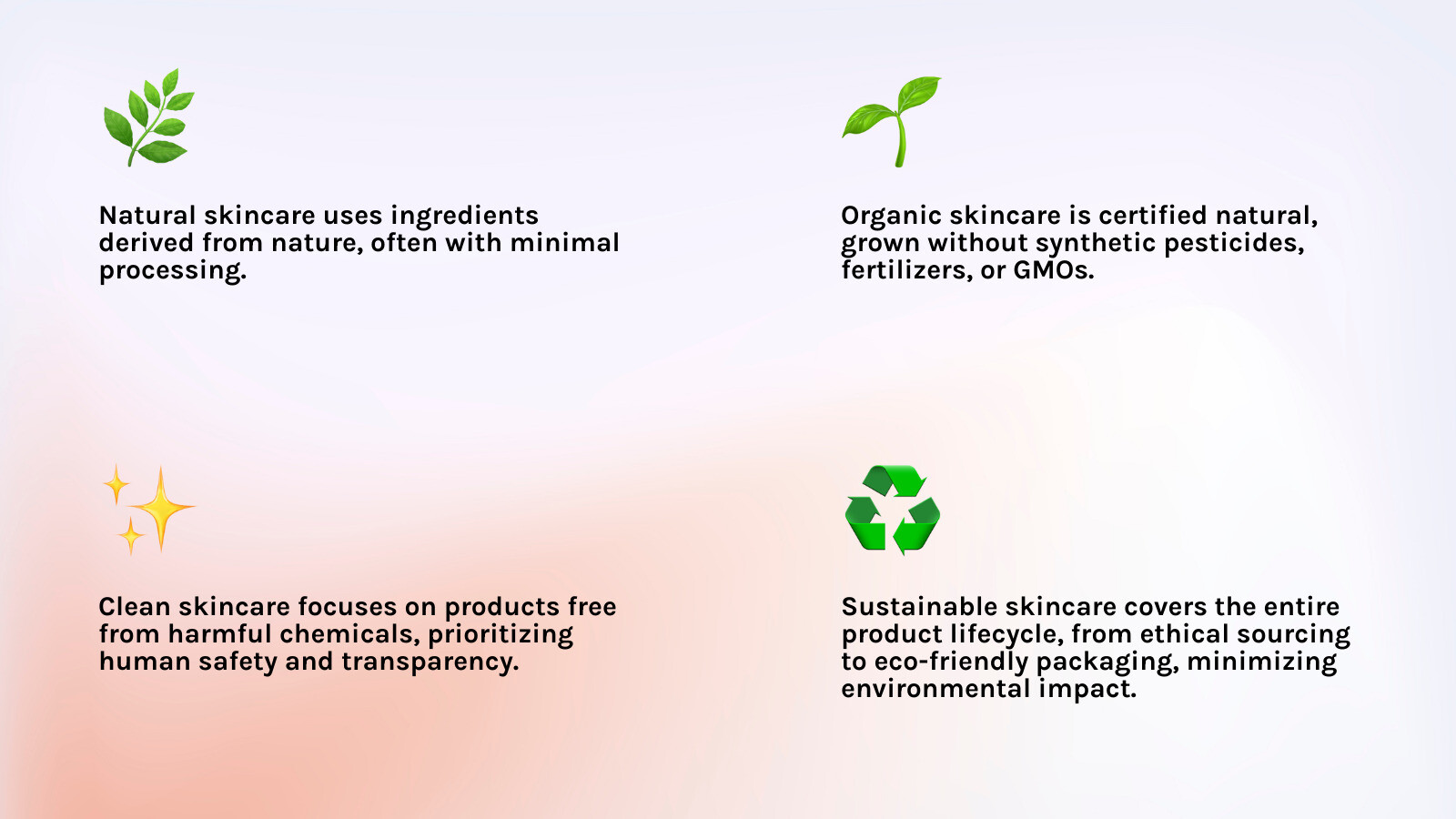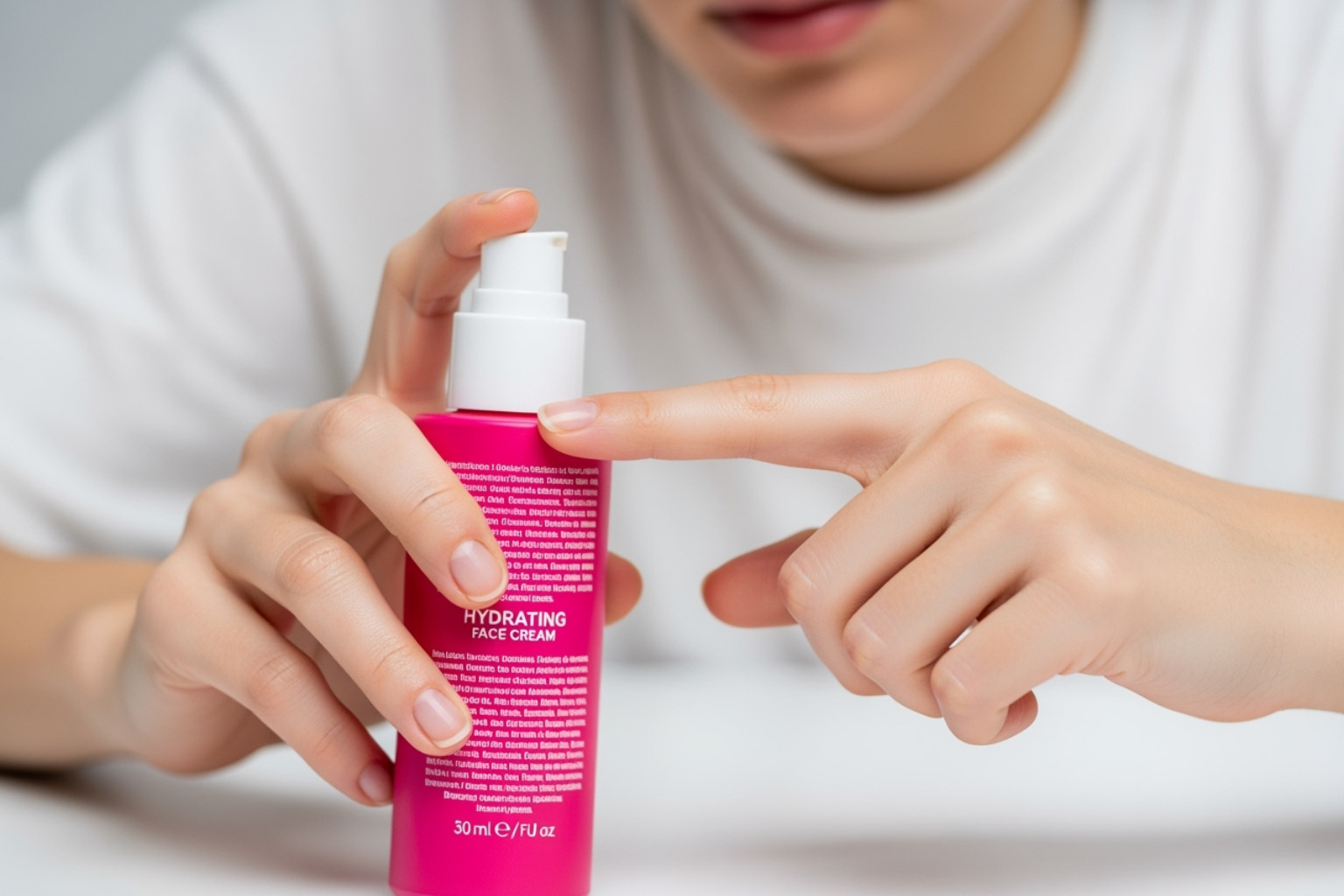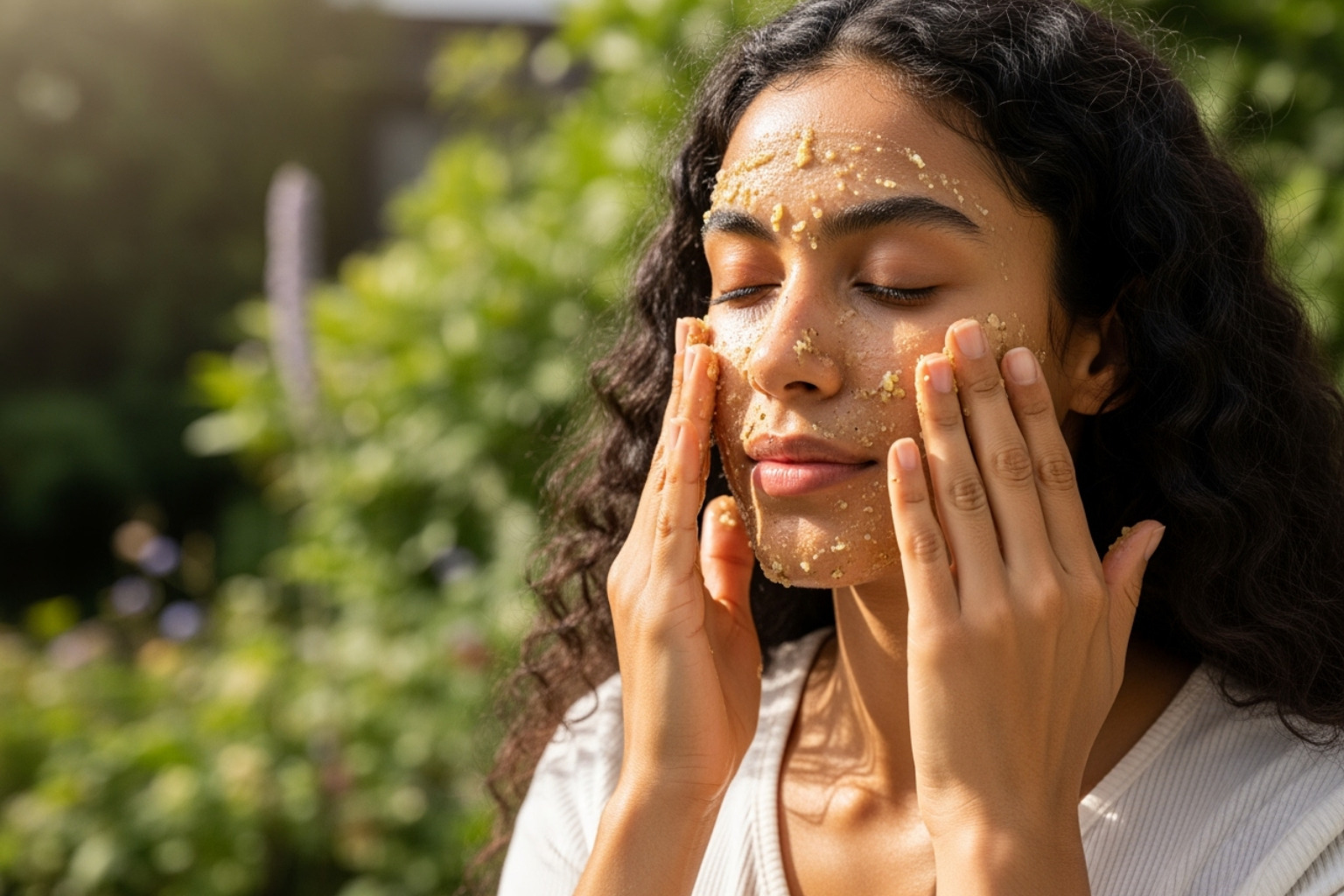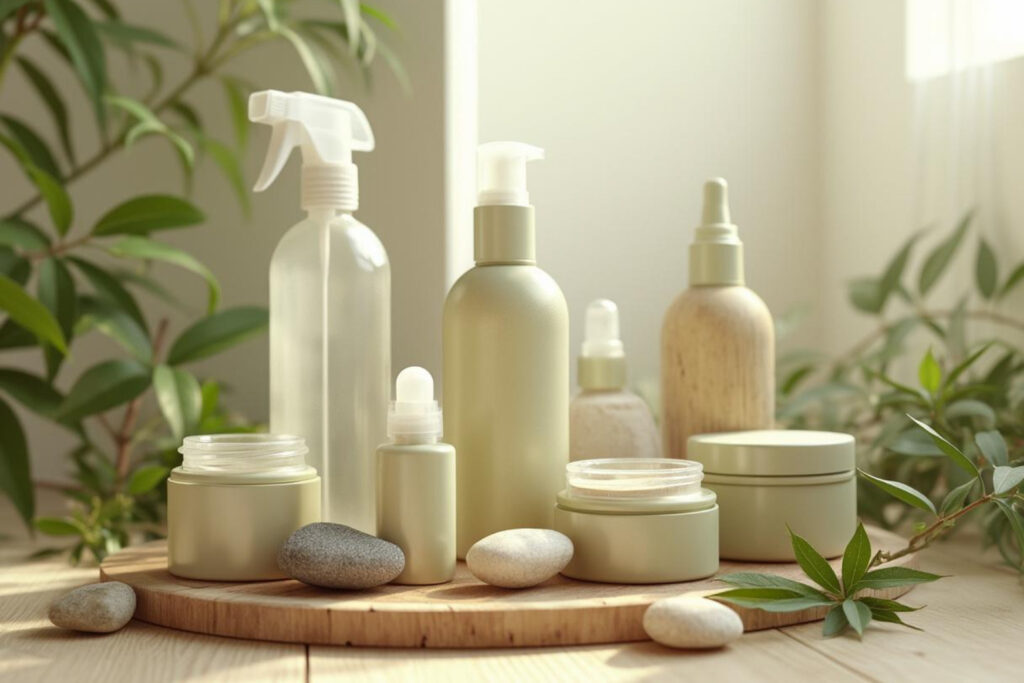Why Choose Natural Sustainable Skincare?
Finding the right natural sustainable skincare products can feel like a hunt. You want choices that are good for your skin and kind to the Earth. At Beyond Beauty Lab, we get it. This guide helps conscious consumers like you steer the growing world of eco-friendly beauty.
So, what exactly are we talking about? Here’s a quick look:
- Natural Ingredients: These come from plants, minerals, or other nature-derived sources. They aim to avoid harsh synthetic chemicals often found in traditional products.
- Sustainable Practices: This goes beyond ingredients. It means brands that source ethically, make products with minimal environmental harm, and use eco-friendly packaging. Think less waste, more good.
- The Big Win: Choosing these products means healthier skin for you. It also means less plastic in landfills and oceans. And you support companies doing things the right way.

What Are Natural and Sustainable Skincare Products and Why Do They Matter?
When we talk about natural sustainable skincare products, we’re looking at something bigger than just what goes on your face. It’s about choosing products that love your skin while also caring for our planet. This shift is driven by consumers who want their beauty routine to align with their values.
Natural skincare uses ingredients that come from nature, like plant extracts and minerals. These ingredients work with your skin’s natural processes, often avoiding the harsh synthetic chemicals that can cause irritation. You’ll find time-tested ingredients like shea butter for moisture, coconut oil for cleansing, and clay for purifying, which are known for being effective and gentle.
Sustainable skincare takes this further, considering the entire product lifecycle. It’s not just about what’s in the bottle, but how it was made. This includes how ingredients are grown and harvested, how workers are treated, and the environmental impact of the packaging.
A truly sustainable brand considers its carbon footprint, uses ethical labor practices, and creates packaging that won’t pollute the environment. They are mindful of water usage and ensure their ingredients are biodegradable.
This matters because the beauty industry has a serious packaging waste problem. About 70% of its waste comes from packaging, most of which is plastic that doesn’t get recycled, polluting our oceans and harming wildlife.
Beyond the environmental impact, there’s your health. Many conventional skincare products contain parabens, phthalates, and synthetic fragrances. Natural ingredients tend to be gentler and less likely to cause reactions.
Ethical sourcing is another key piece. Choosing sustainable brands means supporting fair wages and safe working conditions for the people who grow and harvest the ingredients.
The Hallmarks of Truly Sustainable Skincare
True sustainability involves a lifecycle assessment approach, examining every step from creation to disposal. The best sustainable brands work to reduce their carbon footprint by using renewable energy or manufacturing locally. They are mindful of water usage and ensure ingredients and packaging are biodegradable or easily recyclable. Some brands are moving toward zero-waste skincare with refillable systems and solid products. Ethical labor practices and positive community impact are also central to their mission.
Why ‘Natural’ Isn’t Always ‘Sustainable’
It’s important to be a smart shopper, as not every \”natural\” product is sustainable. Some brands engage in greenwashing, using marketing to appear more eco-friendly than they are. A product might highlight one natural ingredient while being packaged in non-recyclable plastic or using ingredients grown with harmful pesticides.
Furthermore, some natural ingredients require energy-intensive processing or contribute to the over-harvesting of botanicals. The term \”clean beauty\” is also confusing, as it has no official definition and is primarily a marketing term. We encourage you to look beyond claims and investigate a brand’s actual practices.
Understanding the difference between natural and sustainable helps you make better choices. The best natural sustainable skincare products combine gentle, effective ingredients with responsible practices you can feel good about.
Your Guide to the Best Natural Sustainable Skincare Products by Category
Building a routine with natural sustainable skincare products is about choosing versatile, high-quality items that work together while reflecting your values. Focus on a few key categories that deliver real results, caring for your skin and the environment.
Decoding Labels: Ingredients and Certifications to Trust
Understanding what goes into your skincare products is key to making informed choices. We believe in knowing what you’re putting on your body.

Ingredients to Look For
When you’re checking those ingredient lists, there are some real superstars we always get excited to see in your natural sustainable skincare products. Think of them as your skin’s best friends!
For instance, Hyaluronic Acid is a hydration hero. It literally pulls moisture from the air right into your skin, leaving it feeling wonderfully plump. Then there’s Vitamin C, a powerful antioxidant that brightens your skin and helps protect it from daily environmental wear and tear. You’ll also love Squalane, which feels incredibly silky and mimics your skin’s natural oils for deep hydration without any greasiness.
And speaking of oils, Jojoba Oil is a fantastic choice because it’s so similar to our skin’s own natural sebum. This makes it perfect for balancing oil production and giving you lightweight moisture. Don’t forget Shea Butter – it’s a deeply nourishing treat, packed with vitamins for serious hydration. For those looking to improve skin tone or minimize scars, Rosehip Oil is a regenerating powerhouse. And finally, Green Tea Extract and Aloe Vera are wonderful for calming and soothing your skin, especially if it’s feeling a little irritated or needs a boost of antioxidant goodness.
Ingredients to Avoid
Just as important as knowing what to look for is understanding what to steer clear of. Many common skincare ingredients can cause problems for both your health and our precious planet.
First up are Parabens, which are preservatives. They’ve been linked to hormone disruption, and frankly, who wants that in their daily routine? Similarly, Phthalates are often hidden in synthetic fragrances, and they’re also tied to hormone disruption. Speaking of fragrances, if you see ‘Parfum’ or ‘Fragrance’ on a label without further details, be cautious. These can hide a cocktail of undisclosed chemicals, so we always lean towards fragrance-free products unless every ingredient is fully transparent.
Next, beware of harsh cleansing agents like Sulfates (SLS/SLES). These can strip your skin’s natural oils, leaving it dry and irritated. (Just a quick note: don’t confuse them with ingredients like ‘behentrimonium methosulfate,’ which are actually gentle conditioning agents, not harsh sulfates!) And let’s talk about the environment: Microplastics are tiny plastic beads sometimes found in exfoliators. They might feel like they’re doing good, but they end up polluting our waterways and harming marine life. Always check for polyethylene, polypropylene, or polymethyl methacrylate on the label to avoid them.
You’ll also want to watch out for Formaldehyde-releasing Preservatives, which can cause skin irritation. Lastly, while ingredients like Petrolatum/Petroleum Jelly and Mineral Oil are sometimes used to create a barrier on the skin, they are petroleum-based. They can feel heavy and might clog pores for some. We prefer plant-based alternatives like rich plant seed oils, beeswax, or shea butter instead.
It’s important to remember that the term ‘clean’ in skincare is largely unregulated. This means finding truly non-toxic natural sustainable skincare products takes a little bit of mindful detective work. In fact, some regulatory regions have banned more than 1,300 chemicals in cosmetics, while others have restricted fewer than ten. That vast difference really highlights the need for us to be informed consumers!
Key Certifications for Natural Sustainable Skincare Products
Certifications are like trust signals, helping us quickly spot brands that truly walk the talk when it comes to ethical and environmental standards. When you see these seals, you can feel much more confident in your choice of natural sustainable skincare products:
- Leaping Bunny (Cruelty-Free): This is the gold standard for cruelty-free beauty. It assures you that absolutely no animal testing was done at any point during the product’s development, either by the company or its suppliers.
- EWG Verified: The Environmental Working Group (EWG) is a fantastic consumer watchdog. When a product has their ‘EWG Verified’ seal, it means it meets their super-strict health standards, aiming for the lowest hazard ratings possible.
- Certified B Corporation: This is a really big one! A B Corp certification means the entire company has been rigorously assessed for its social and environmental performance, transparency, and accountability. These companies balance profit with purpose, showing a deep commitment to their workers, customers, community, and the environment.
- USDA Organic: For skincare products that contain agricultural ingredients, this certification is your guarantee that they were produced without synthetic pesticides, fertilizers, or GMOs.
- Fair Trade Certified: This seal ensures that the ingredients were sourced ethically. It means farmers and workers in developing countries received fair wages and worked in safe conditions. It’s about supporting a global movement of kindness and respect.
- Vegan: If a product is vegan, it means it contains absolutely no animal-derived ingredients or by-products. Think no honey, beeswax, carmine, or lanolin. This is super important for those following a vegan skincare routine. Just remember, ‘vegan’ doesn’t automatically mean ‘cruelty-free,’ so if animal welfare is a top priority for you, always look for both certifications!
Beyond the Product: Sustainable Packaging and Accessories
We’ve talked a lot about what’s inside the bottle, but what about the bottle itself? It’s a big deal! The truth is, packaging is a huge part of the beauty industry’s waste problem. Did you know that about 70% of the beauty industry’s waste comes from packaging? And much of that is plastic that’s really hard to recycle (learn more about the global picture of plastic pollution). At Beyond Beauty Lab, our commitment to natural sustainable skincare products goes beyond just the ingredients. We’re all about embracing eco-friendly skin care packaging and working towards a truly zero-waste routine. It’s about making choices that help both your skin and our planet.

The Best Eco-Friendly Packaging Options
When you’re shopping, choosing packaging that uses less plastic and can be reused or recycled is super important. Let’s look at some of the best options out there:
First up, Glass is fantastic because you can recycle it forever, and it won’t let chemicals get into your products. It’s a top pick for jars and bottles. Similarly, Aluminum is also endlessly recyclable and very light, making it a smart choice for tubes and tins.
While plastic isn’t ideal, Post-Consumer Recycled (PCR) Plastic is a step in the right direction. It uses plastic that’s already been recycled, which means less new plastic needs to be made. Another cool option is Sugarcane Bioresin Tubes, which are made from renewable sugarcane instead of traditional plastic, and are often recyclable too.
But perhaps the most impactful choice is Refillable Containers. This is where you buy a product once in a durable container, then just buy refills to top it up. This significantly cuts down on waste! As we’ve learned, “refilling and reusing reduces far more plastic and CO2 than recycling.” We really encourage you to look for brands that offer refill options or even have programs where you can send back empty bottles. You can learn more about finding truly eco friendly skin care packaging.
Finally, for solid products like bar soaps or powders, Compostable Paper/Cardboard is an excellent choice because it breaks down naturally. Just look for FSC-certified paper to ensure it comes from responsibly managed forests.
By choosing products with these types of packaging, you’re helping to create a circular economy and lessen our environmental footprint. Every little bit helps!
Sustainable Swaps for Your Skincare Tools
It’s not just the products; our skincare tools can also create a lot of waste. The good news is, making a few simple changes can make a big difference for the environment.
Let’s start with a real “game-changer”: Reusable Cotton Rounds. These are amazing! One reusable cotton round can replace over 1,750 single-use ones and is much better for the planet. They’re usually made from organic cotton or bamboo, and you can just wash and reuse them.
Next, consider Biodegradable Sponges. Instead of synthetic ones, choose natural alternatives like Konjac Sponges. They’re made from the konjac plant root, are super gentle on your skin, and you can fully compost them when you’re done.
If you use makeup, switch to an Eco-Friendly Bamboo Makeup Brush Set. These brushes have bamboo handles instead of plastic, and often come with synthetic (or sustainably sourced natural) bristles. They’re durable and much kinder to the environment.
For your bath or shower, if you use a loofah, pick a Natural Loofah. Just remember that they can hold onto bacteria, so you’ll need to replace them often.
And don’t forget Reusable Swabs! Those tiny plastic swab sticks are a big problem, often ending up as beach litter. Switching to reusable silicone swabs or ones with paper or bamboo sticks is a simple, impactful swap. You might also think about Plastic-Free Hair Tools like wooden combs and brushes, or razors with metal handles and replaceable blades.
These small changes in our daily routine can add up to a big difference in reducing waste and truly embracing natural sustainable skincare products and practices.
Frequently Asked Questions about Sustainable Skincare
It’s natural to have questions when you’re diving into natural sustainable skincare products. We get it! Let’s clear up some common thoughts and concerns you might have.
Is ‘natural’ skincare better for sensitive skin?
It’s a great question, and the answer isn’t always a simple yes. Often, people with sensitive skin find a real difference when they switch to products free from synthetic fragrances, harsh sulfates, or parabens. Many natural skincare brands wisely choose to avoid these common irritants.
However, “natural” doesn’t automatically mean “hypoallergenic.” Some natural ingredients, like certain essential oils or potent plant extracts, can be quite powerful. For very sensitive individuals, even these natural wonders might cause an allergic reaction.
So, what’s our best advice? Always, always patch test any new product, natural or otherwise. Just try it on a small, hidden area of skin first. When you’re reading labels, even on natural products, look for terms like “fragrance-free” or “for sensitive skin.” And if you have truly severe sensitivities or a specific skin condition, chatting with a dermatologist is always a smart move. They can help guide you to the perfect ingredients and products, including wonderful options like vegan skincare for sensitive skin.
Are sustainable skincare products more expensive?
This is a really common idea, but it’s often a misconception! While some luxurious sustainable brands might come with a higher price tag, there are so many affordable eco-friendly skin care options popping up these days. You don’t have to break the bank to make conscious choices.
Think about it this way: sometimes, a slightly higher upfront cost can actually save you money in the long run. Sustainable products, especially concentrated formulas or solid bar formats, often last much longer than their conventional counterparts. This means their “cost per use” can actually be similar, or even lower! Investing in products with better ingredients and sustainable practices can also lead to healthier skin over time, potentially reducing the need for more expensive treatments later on.
And for those on a super tight budget, exploring simple DIY skincare recipes can be a wonderfully affordable and low-waste approach. “Less is more” also applies here. Streamlining your routine to just a few high-quality products can save you money and reduce overall consumption. The good news is, the market for budget-friendly brands that truly prioritize natural ingredients and sustainable practices is booming, making it easier than ever to switch without emptying your wallet.
How do I properly dispose of skincare packaging?
Okay, let’s be honest, figuring out how to dispose of skincare packaging can be a bit of a puzzle! Recycling rules can vary a lot depending on where you live. But don’t worry, we’ve got some general tips to help you out.
First, always look for the recycling symbol (that little triangle with a number inside) on the packaging. This helps you know what kind of plastic it is. And here’s a big one: always rinse out your containers really well before recycling. Any product residue can actually contaminate the recycling stream, meaning it might end up in the landfill anyway.
It’s always a good idea to check with your local waste management facility for their specific guidelines. They’ll tell you exactly what they accept. Sometimes, very small plastic items, like lip balm tubes, might not be accepted in curbside recycling because they’re too tiny for the machines.
But there are other options! Many beauty brands have partnered with Terracycle, a fantastic company that specializes in recycling those hard-to-recycle items. Brands like Tom’s of Maine and hello offer free mail-in programs for their packaging, and sometimes even other brands’ packaging. Nordstrom’s BeautyCycle program is another great example where you can drop off your empty beauty containers right at their store.
If your packaging is certified compostable (like some sugarcane bioresin tubes or paper packaging), it can go into industrial compost facilities. Just be aware that if you’re composting things like cotton or bamboo rounds, they need to be clean. If they’ve been used for something like nail polish, they should go in the trash.
Don’t forget about upcycling! Glass jars, for example, can be cleaned and reused for all sorts of things – storage, DIY projects, or even as cute little plant pots.
Now, for some trickier items: perfume bottles, interestingly, usually can’t be recycled with other glass. The liquid residues are often flammable. You might need to look for specialized programs for these, like drop-off points at some Sephora stores or specific flammable waste programs. And those plastic pumps often have metal springs inside, so they’re typically not accepted in regular curbside recycling. Again, specialized recycling programs or Terracycle are your best bet for these.
By taking these steps, big and small, we can ensure that our commitment to natural sustainable skincare products truly extends to their entire lifecycle, helping us minimize our impact on our beautiful planet.
Conclusion
The journey to embracing natural sustainable skincare products is an empowering one. It’s about making conscious choices that benefit not only our own health and well-being but also the health of our planet and the communities that produce our beloved ingredients. We’ve explored what defines natural and sustainable skincare, the ingredients to seek out and avoid, the importance of certifications, and how thoughtful packaging and tool choices can make a significant difference.
This shift isn’t just a trend; it’s a transformative movement towards mindful beauty rituals that celebrate purity, sustainability, and ethical integrity. Every time we choose a product with eco-friendly packaging, support a brand with fair trade practices, or opt for natural ingredients, we cast a vote for a world where beauty is synonymous with kindness, fairness, and sustainability.
At Beyond Beauty Lab, we are committed to being your trusted resource on this journey. We will continue to provide educational content and insights to help you steer skincare and wellness with confidence. We encourage you to start small, use up what you have, and then replace it with a greener option. The future of beauty is in our hands, and together, we can make it truly beautiful. Explore more natural sustainable skincare products and resources with us.







